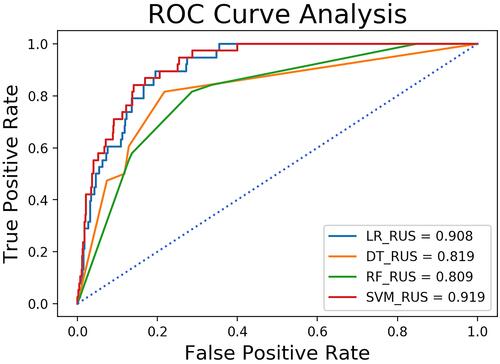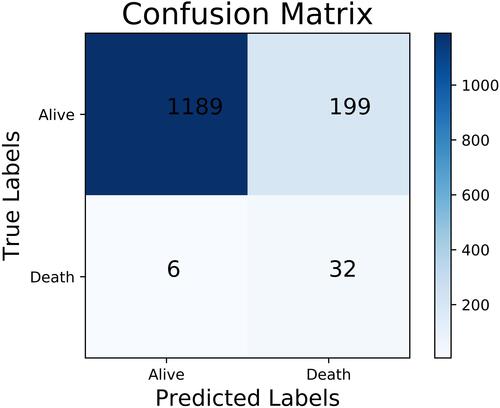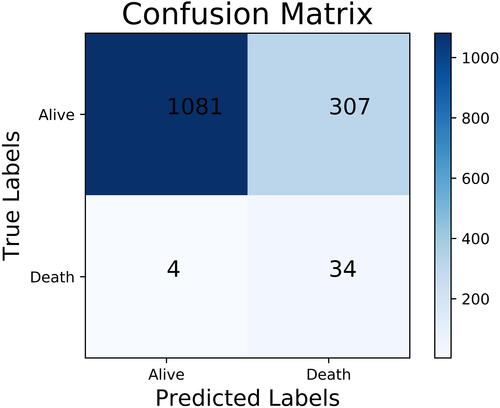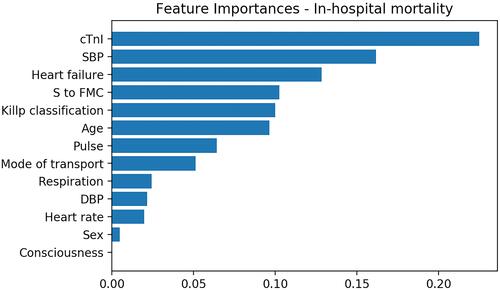Figures & data
Table 1 Simplified Set and Full Set of Features
Table 2 Basic Characteristics of Continuous Numerical Variables
Table 3 Basic Characteristics of Categorical Variables
Table 4 Performance Comparison of the Traditional and Optimized ML Models Using the Full Set
Figure 1 ROC analysis results of models trained without RUS using the full set.

Figure 2 ROC analysis results of models trained with RUS using the full set.

Figure 3 The confusion matrix of the SVM trained with RUS using the full set.

Figure 4 The confusion matrix of the SVM trained without RUS using the full set.

Table 5 Performance Comparison of the Traditional and Optimized ML Models Using the Simplified Set
Figure 5 The confusion matrix of the SVM trained with RUS using the simplified set.

Figure 6 The feature importance scores for predicting the in-hospital mortality provided by the RF.

Table 6 Best Predictive Performance Results of the Models Developed by Other Articles
